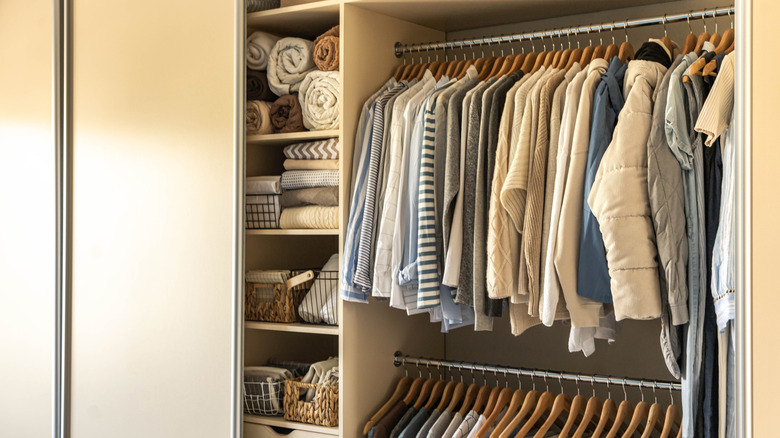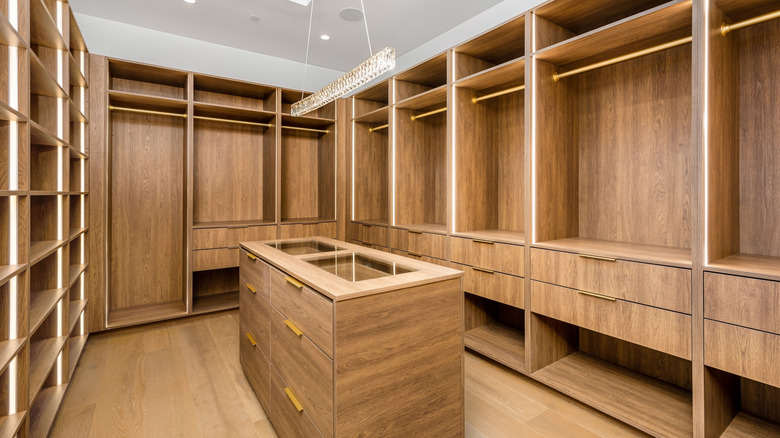What To Know About The Standard Depths For Different Types Of Closets
Whether you're adding onto your home, building a new one, or just designing a closet for better use in your existing space, it's good to have an idea of the standard depths for reach-ins, walk-ins, and wardrobes. Simply put, they take into consideration a closet's typical contents. For instance, ones designed to hold clothes need to take into account space for garments, hangers, hanging rods, or other storage. Clothes hangers typically measure 17 to 19 inches wide, and need at least 22 inches of depth to swing freely. Plus, some standard closet organizing pieces, like pull-out drawers or basket assemblies, can reach depths of up to 26 inches when fully extended.
To accommodate these items, as well as the clothing itself, reach-in closets are generally at least 24 inches deep. Those designed to hang bulkier items, like winter coats, can be up to 28 inches deep. This allows room for the items being stored but isn't so deep that you'd need elastic arms to reach the back — after all, a reach-in closet means just that. Keep reading to find out more about standard depths for varied closets.
Depths for walk-in closets and wardrobes
Walk-in closets, most homeowners' preferred closet type, come in different sizes. To allow room to walk into them, the smallest walk-in closets generally have a depth of at least 4 feet. Medium walk-in closets reach 6 feet deep, with larger walk-ins having depths of 7 feet or more. Particularly large walk-in closets can be used as dressing rooms. Accommodating their extra furniture, or a separate storage island, means these extra-large walk-in closets can reach depths of up to 17 feet. These measurements take into consideration 2 feet of space for walking, 2 feet of depth for clothes on hangers, and 3 feet of clearance around an island.
Although there's a difference between a wardrobe and a closet, these freestanding storage options have a standard depth, too, which is generally about 24 inches. However, you can occasionally find them as shallow as 12 to 18 inches. It's true that this doesn't leave much room for maneuvering, and cramming clothes into a closet that's too shallow can wrinkle them. Clothing itself takes up significant space, with shirts and blouses being less bulky than suits, dresses, or coats. Moreover, closet shelving can be 12 to 14 inches deep. On the other hand, if it's too deep, you won't be able to reach the back. While most U.S. homes aren't legally required to meet ADA (Americans with Disabilities Act) requirements, it's good to know the guidelines say the maximum distance between a wheelchair user and a closet rod should be 21 inches.

